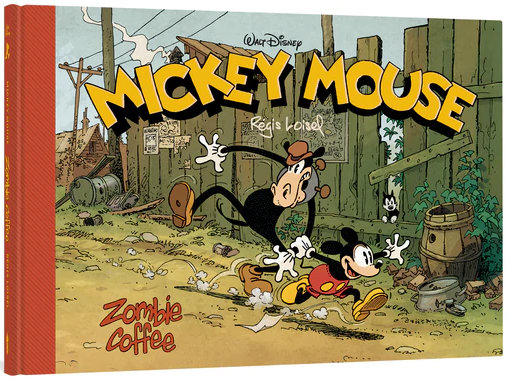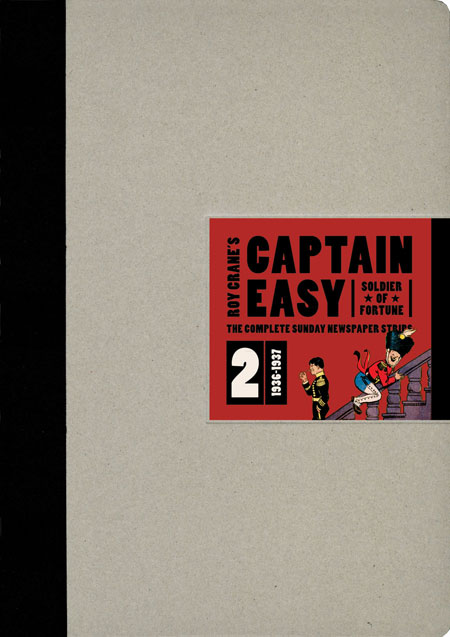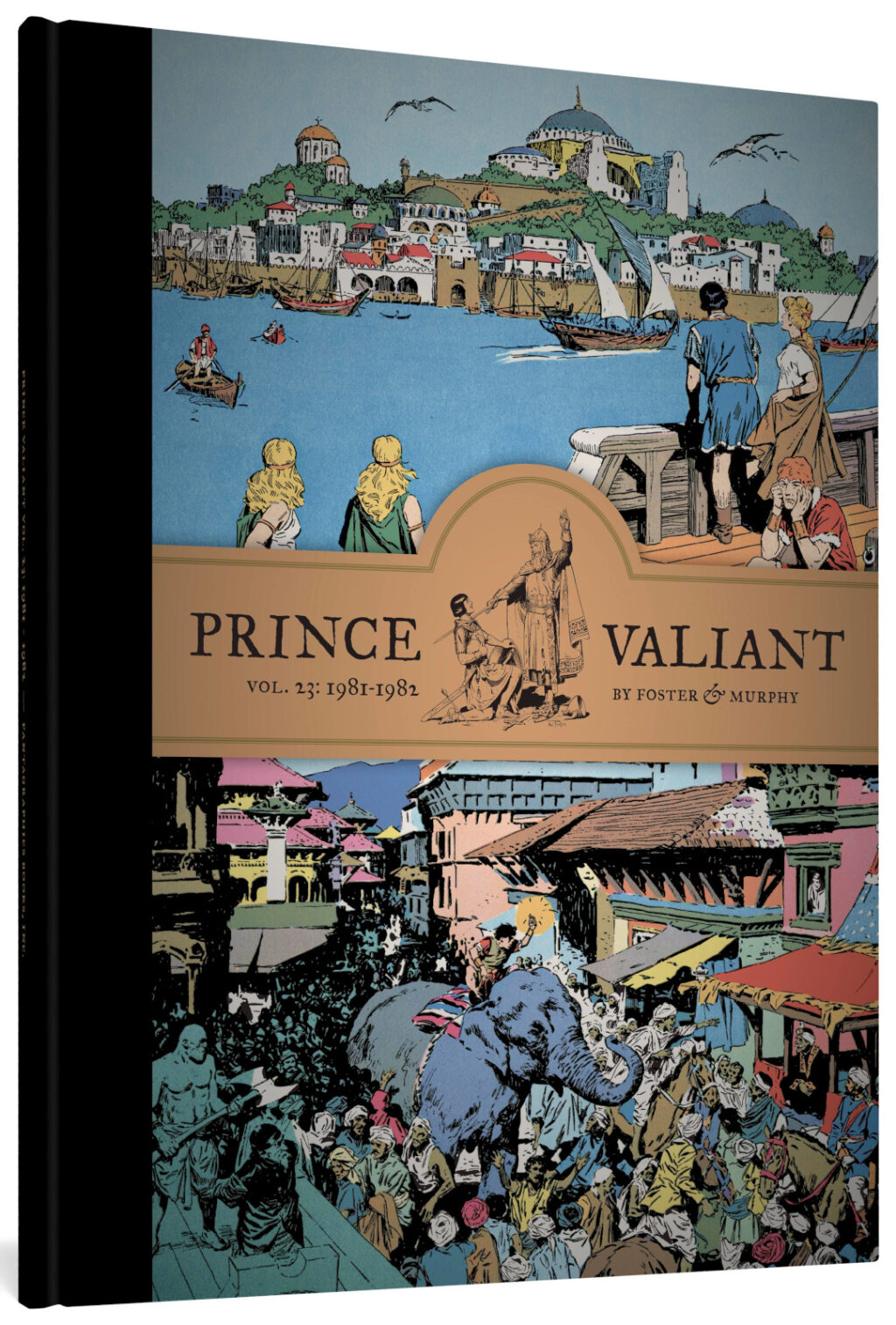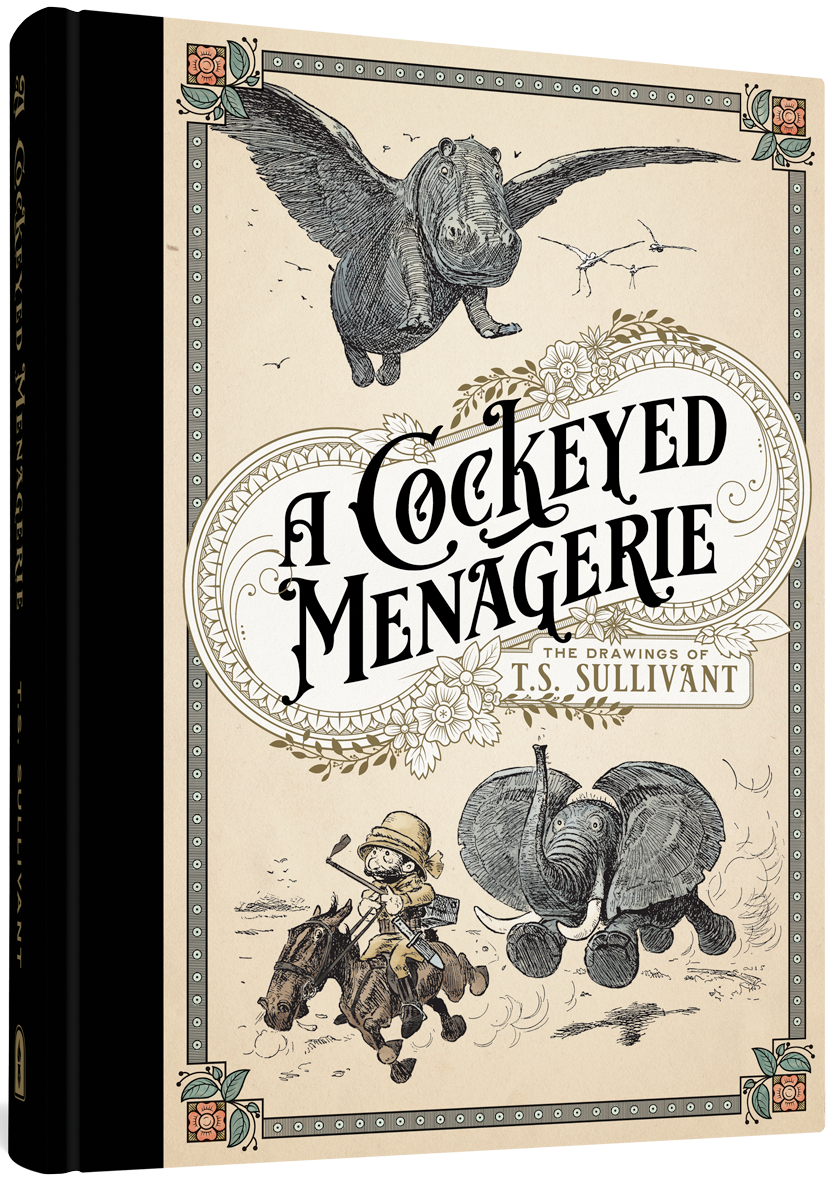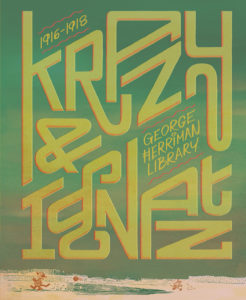
For nearly 30 years, George Herriman’s hilarious, poetic masterpiece Krazy Kat graced the Sunday pages of America’s newspapers. Featuring the love triangle of “kat,” “mice,” and “pupp,” each of Herriman’s pages is a work of transcendent art, crackling with verbal wit and graphic brilliance, earning the moniker from many as the best comics strip ever created.
This new hardcover collection of all the full-sized Sunday pages from 1916 through 1918 brings back into print the inventive language, haunting vistas, and beguiling brick throwing that makes this strip so special. Perfect for Herriman connoisseurs or brand-new readers, this collection provides you with the joy of joining the lovelorn Krazy Kat, the ill-tempered Ignatz Mouse, the stalwart Officer Pupp, and many more of the inhabitants of surreal Coconino County in the strip that originally elevated the comics medium into a celebrated art form.
- Fantagraphics, November 27, 2019
- 11.25″ x 13.75″, 176 pages, hardcover
- ISBN 978-1-68396-255-7
- $35 USD
- Order online: Amazon, Indigo
The complete Krazy Kat Sunday strips from 1916-1918 in a gorgeous hardcover presentation.
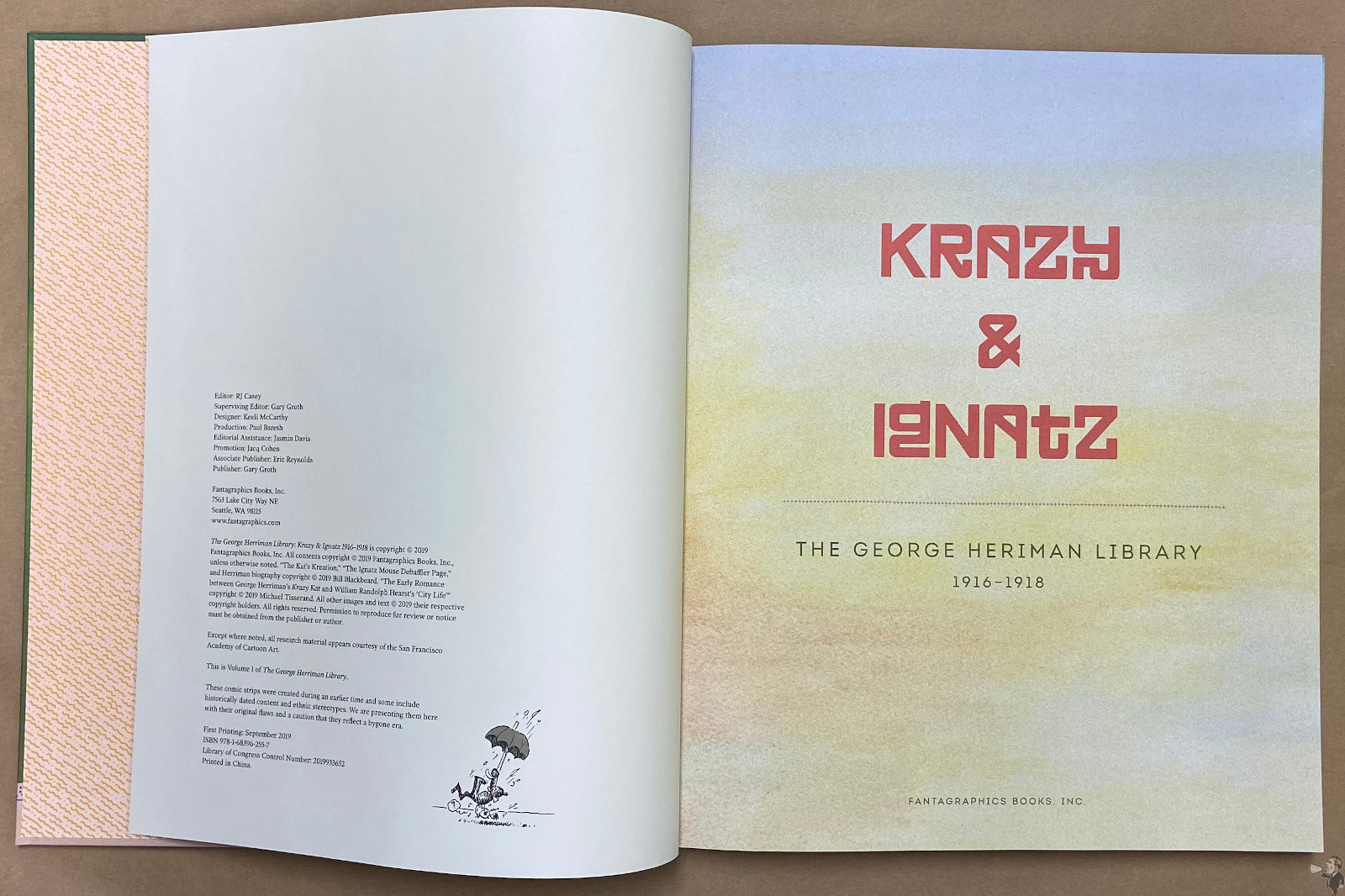
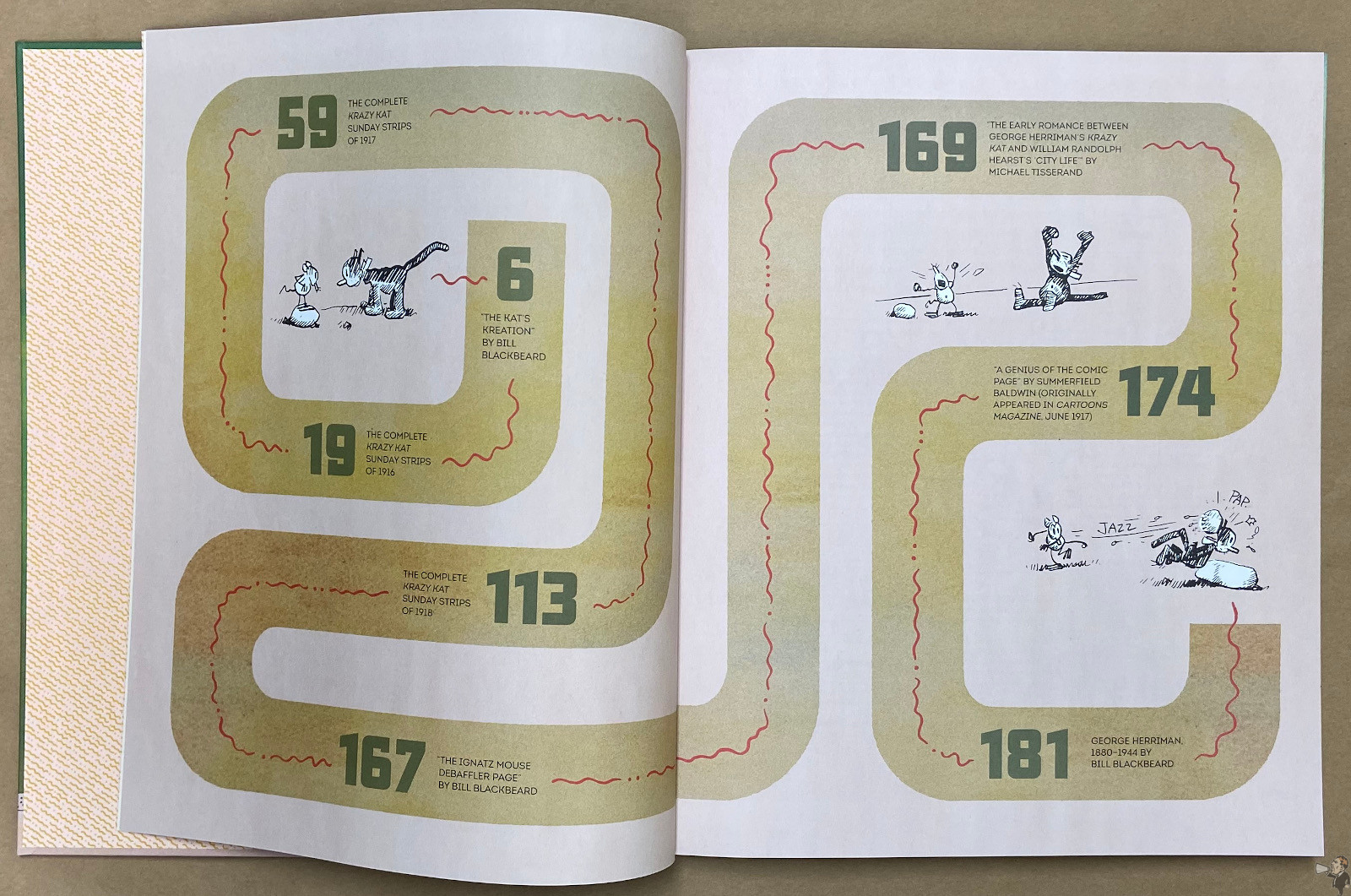
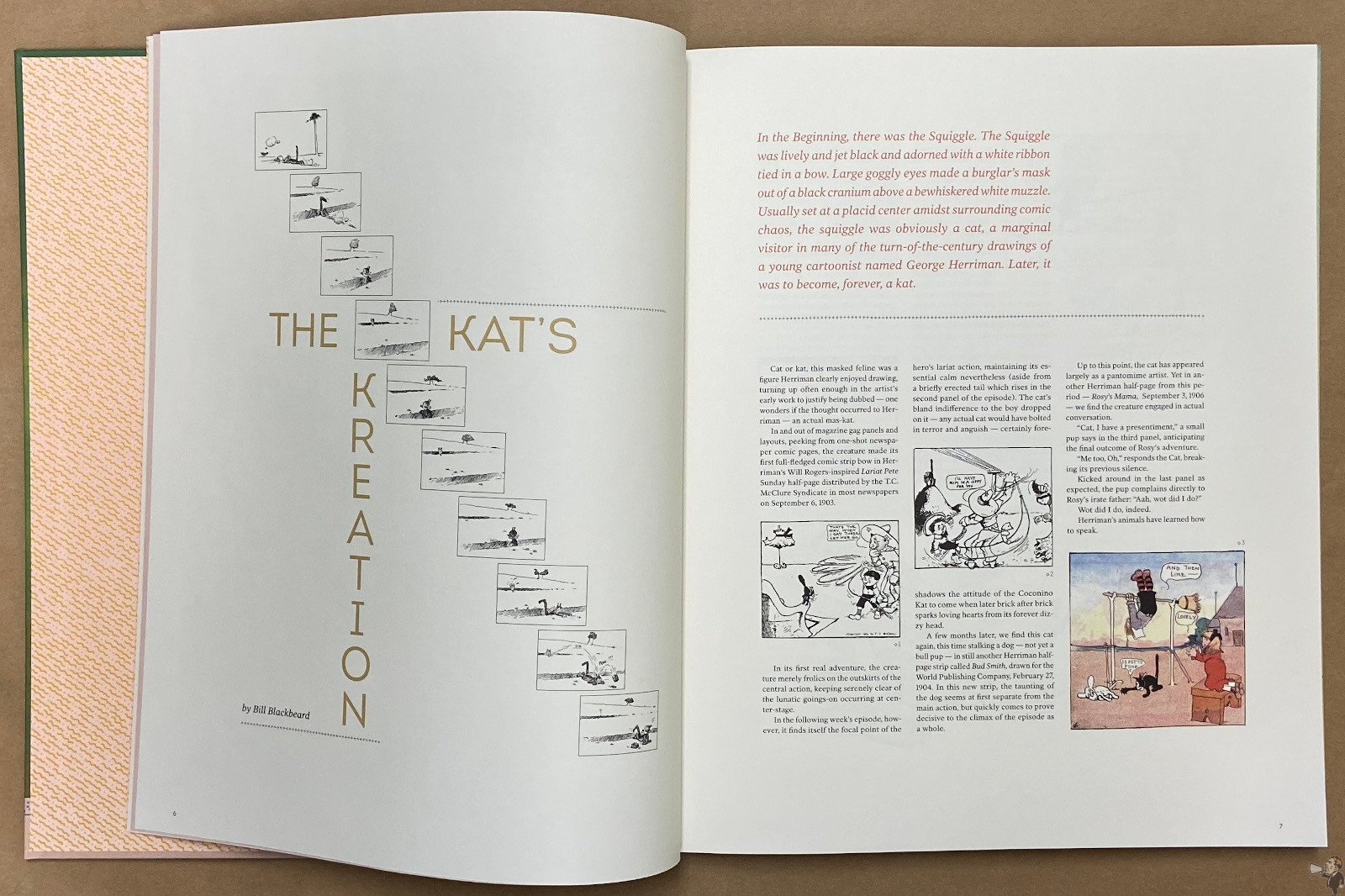
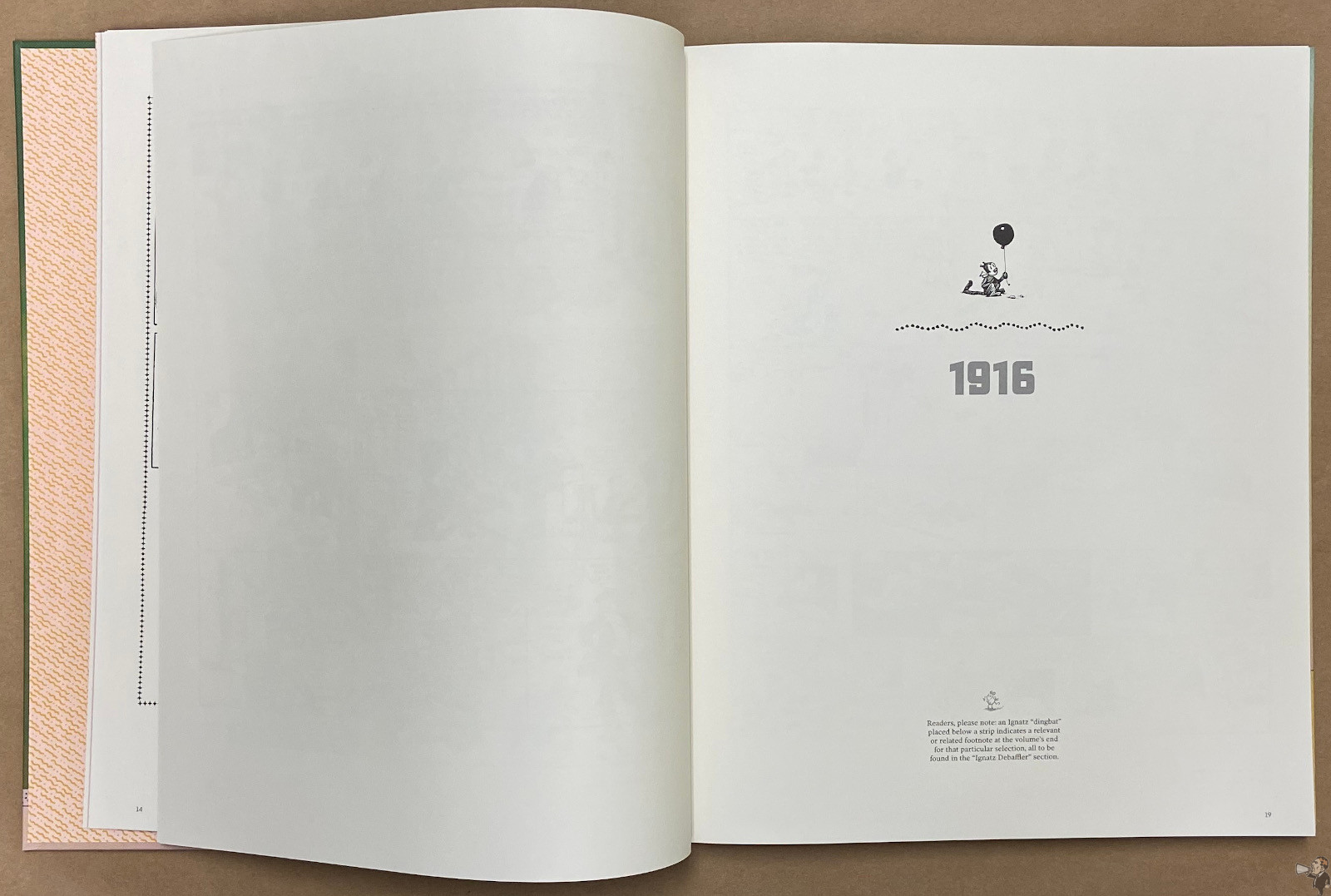
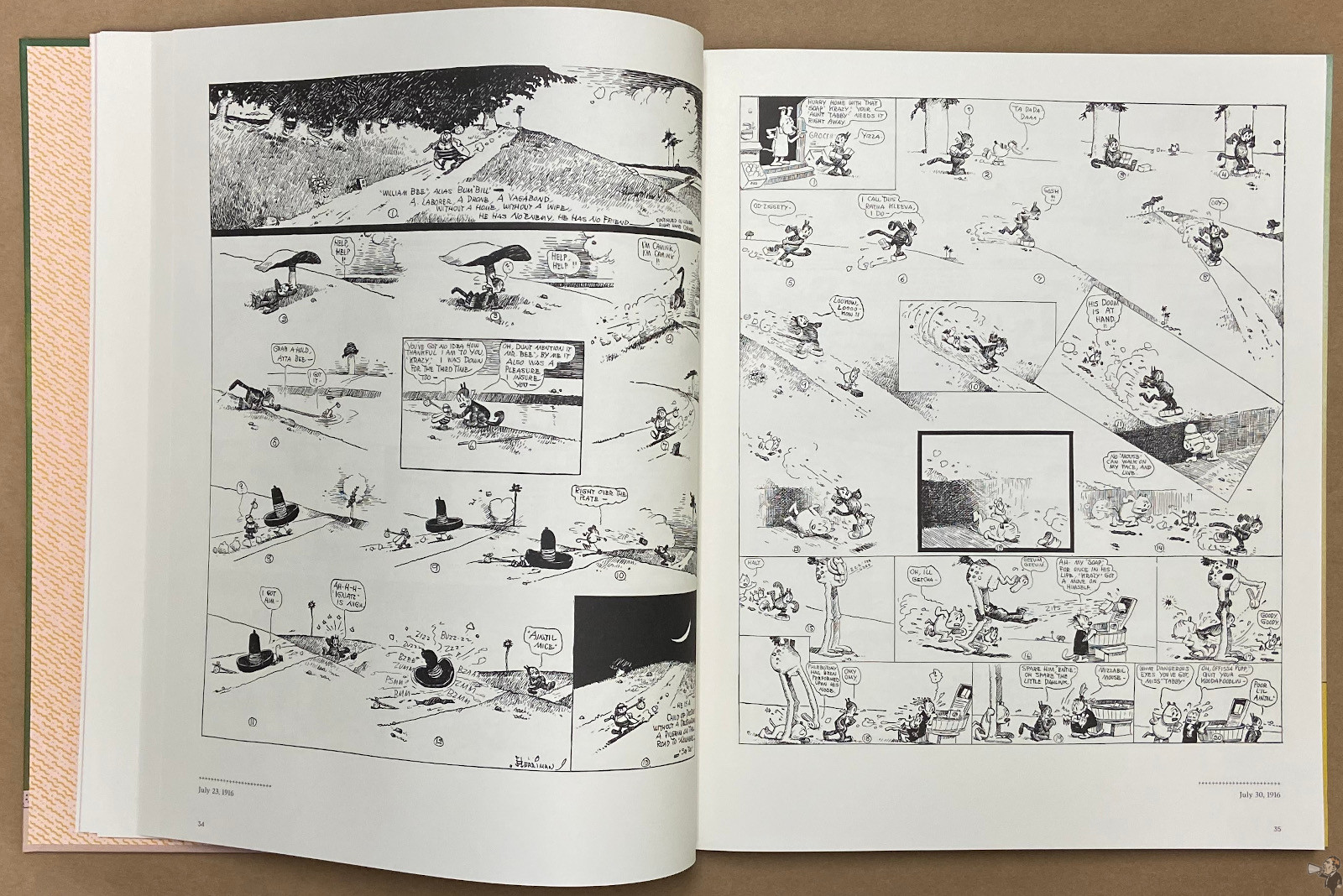
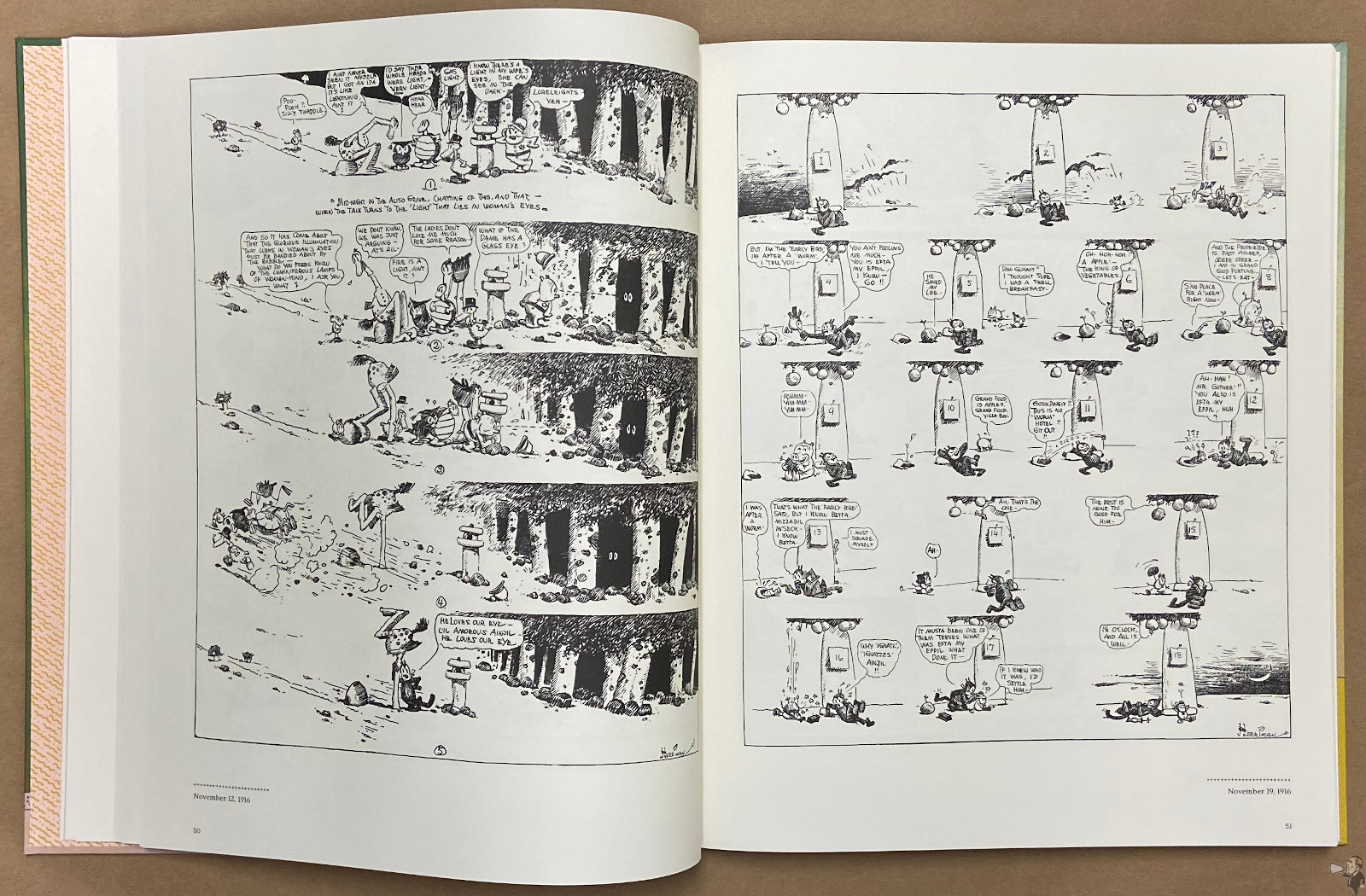
Herriman in general and Krazy Kat, in particular, have garnered praise almost since the strips’ inception. It’s a relatively simple premise of the two main characters, a cat and a mouse, and the sizeable supporting cast. Krazy is a kind-hearted cat in love with Ignatz, a mouse that is a complete jerk.
I’ve made several attempts at reading Krazy Kat, but always seem to lose my way. Bill Blackbeard notes in his introduction readers were complaining 100 years ago about the same thing.
Complaints about “this weird stuff nobody can understand” began to arrive regularly in the mail.
Bill Blackbeard
It was only through an open mind and a break between each strip that I began to appreciate what Herriman was offering. Wit, charm, and personality in a relatively simple yet enveloping artistic presentation. And very much an acquired taste.
Fantagraphics has previously published all Sundays in a series of softcover volumes and then collected those in three hardcovers. For some reason, they were printed out of sequential order. Now we’re getting the material in sequential order right from the beginning, in hardcover format. We can only hope the dailies will be collected this time around.
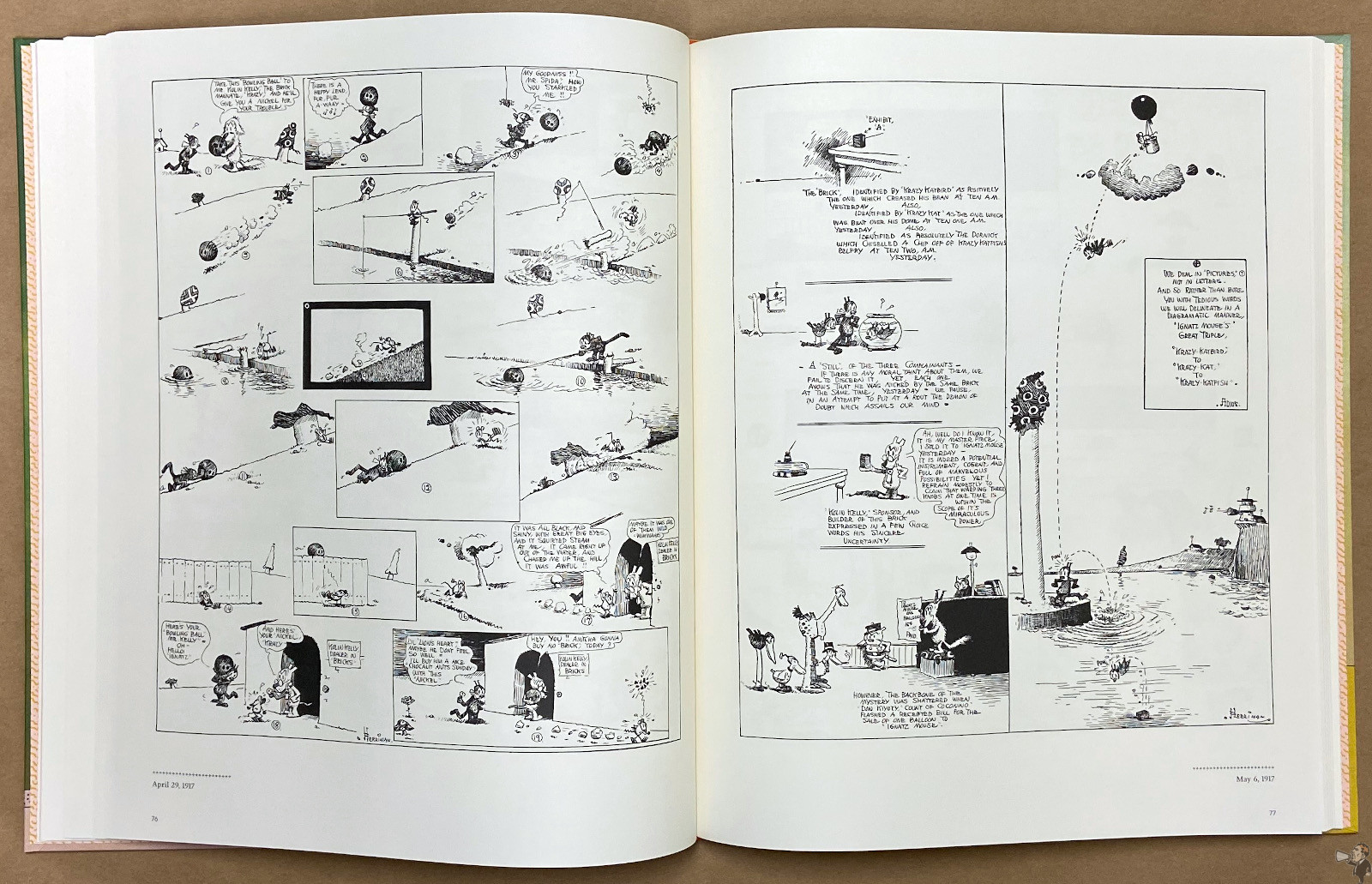
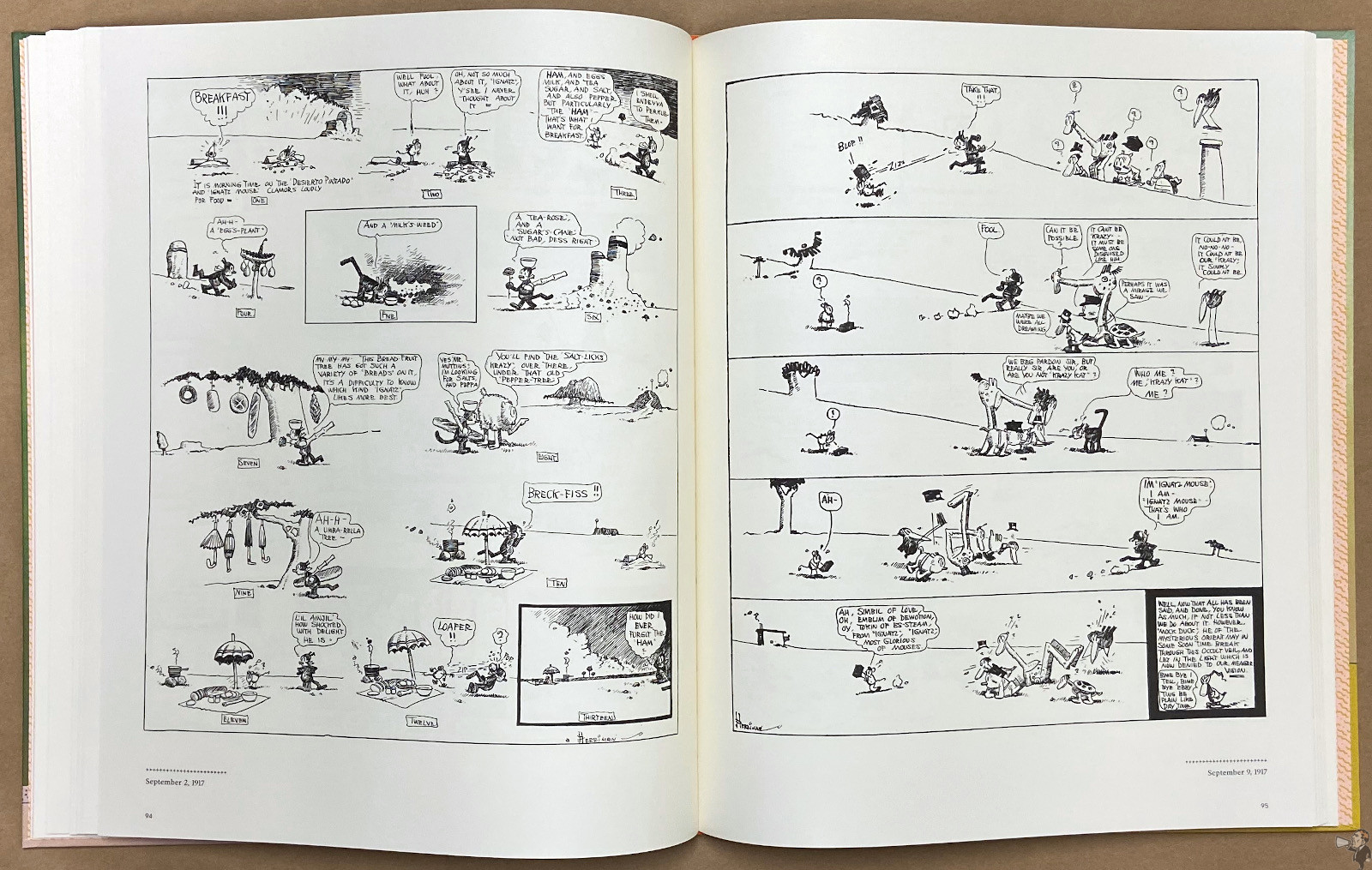
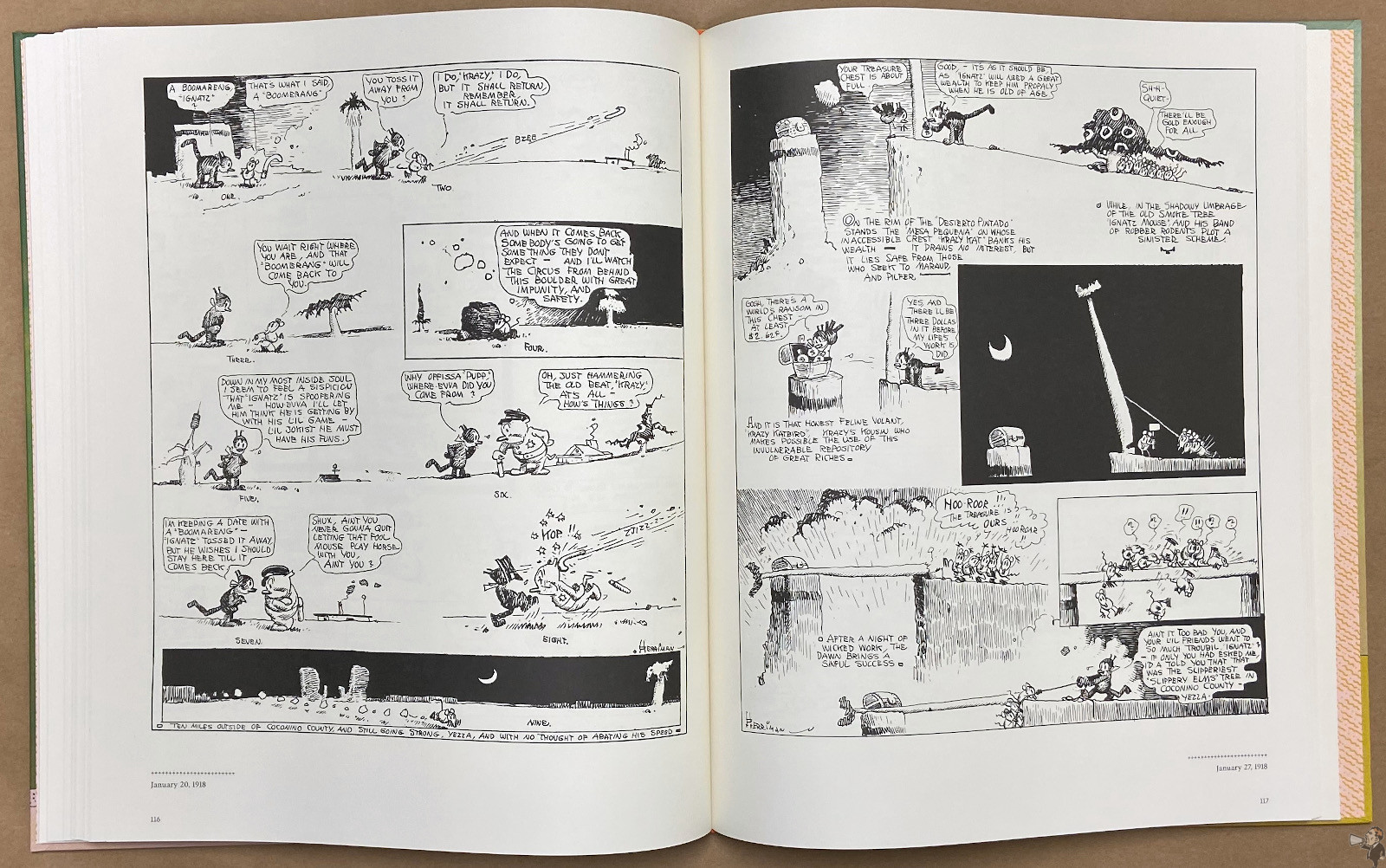

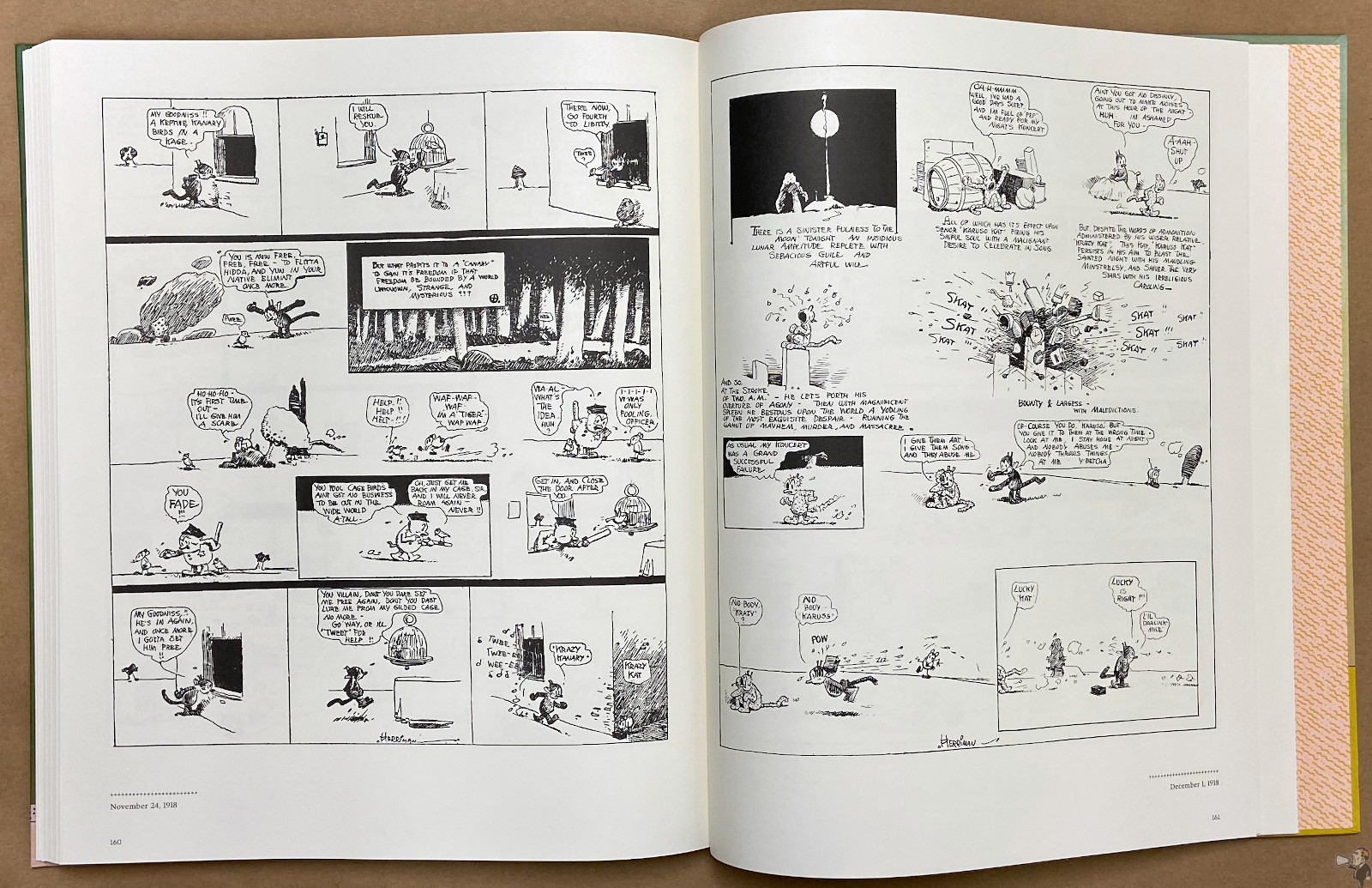

It’s hard to discuss this new volume without referring back to the previous run of softcovers from Fantagraphics. Mostly because this new hardcover uses all the same material from the earlier softcover. All strips, essays and supplementary material from that 2010 softcover are included.
There is one change. A swap, old for new. The original publisher’s note by Kim Thompson has been removed, and an essay by Michael Tisserand is included. Since I now own both comparison photos are included.
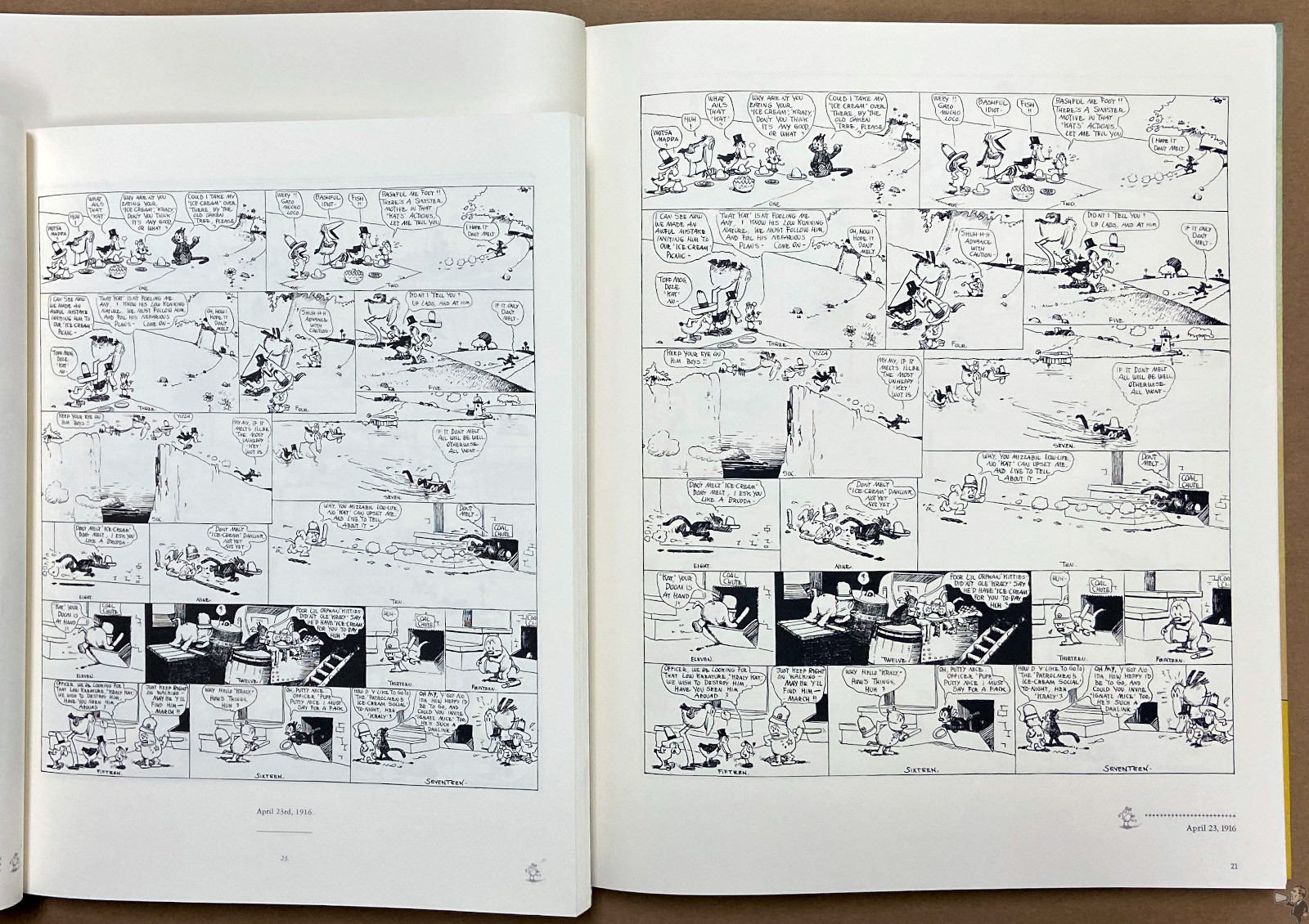
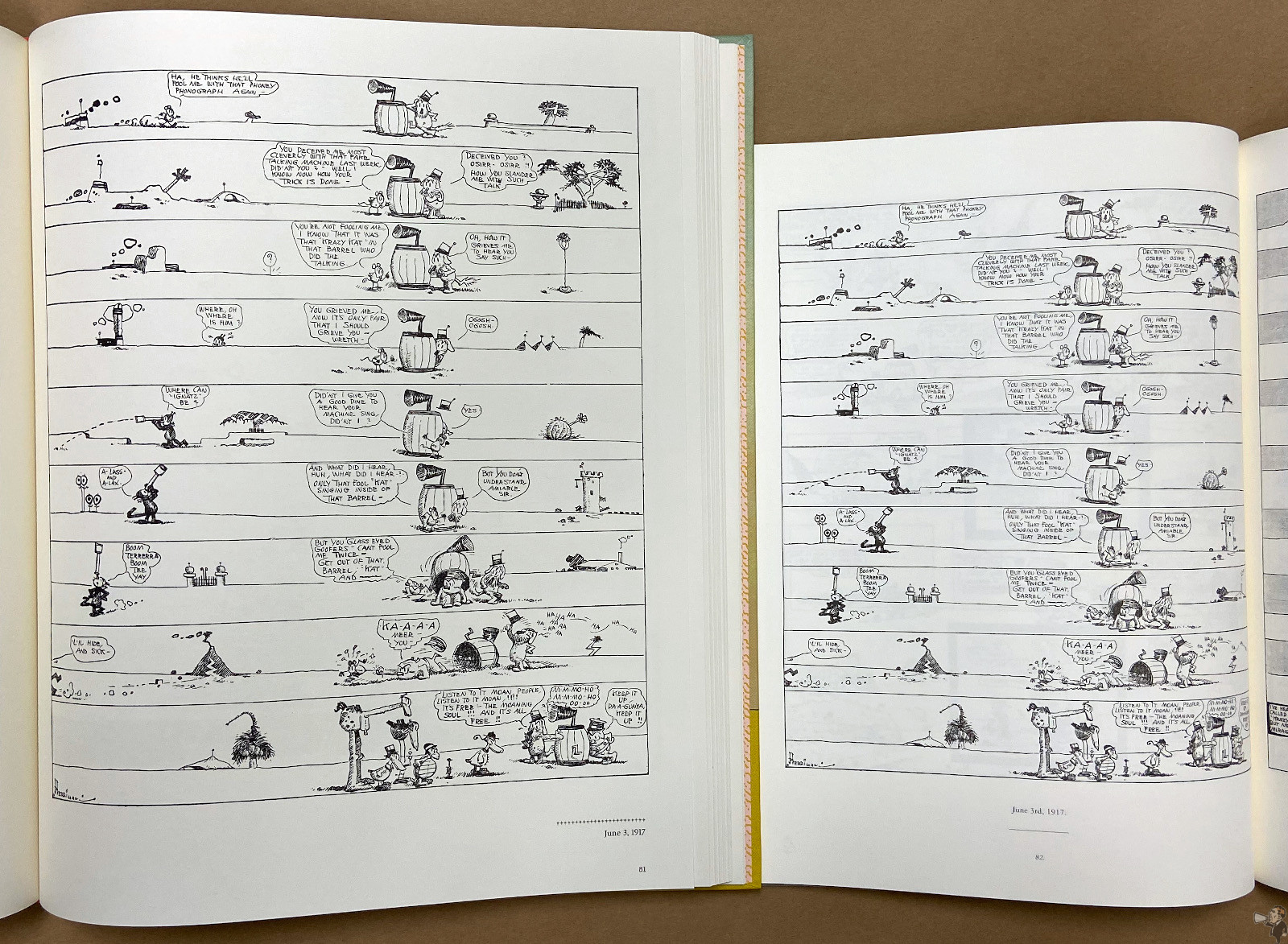

Part of what makes this “upgrade” so exciting is the wonderful design by Keeli McCarthy. With a book of black and white content, McCarthy has added colour, visual appeal and overall whimsy. The cover, title page and table of contents all receive this special attention, while the chapter dividers are relatively bare.
Production has also been stepped up. The hardcover treatment is well deserved, as is the upgrade in paper. But the standout feature is the size: at 11.25″ x 13.75″ it’s a significant increase and one that allows the reader to become immersed in each strip. Because Herriman was very freeform with dialogue and text, and we’re not fortunate enough to experience the strips as they were originally published, this increased size is very welcome.
With a title like “The George Herriman Library” we hopeful readers look to the future for other strips to be presented in this wonderful format. The Library Of American Comics have already published Baron Bean, but I’m crossing my fingers for Stumble Inn.

